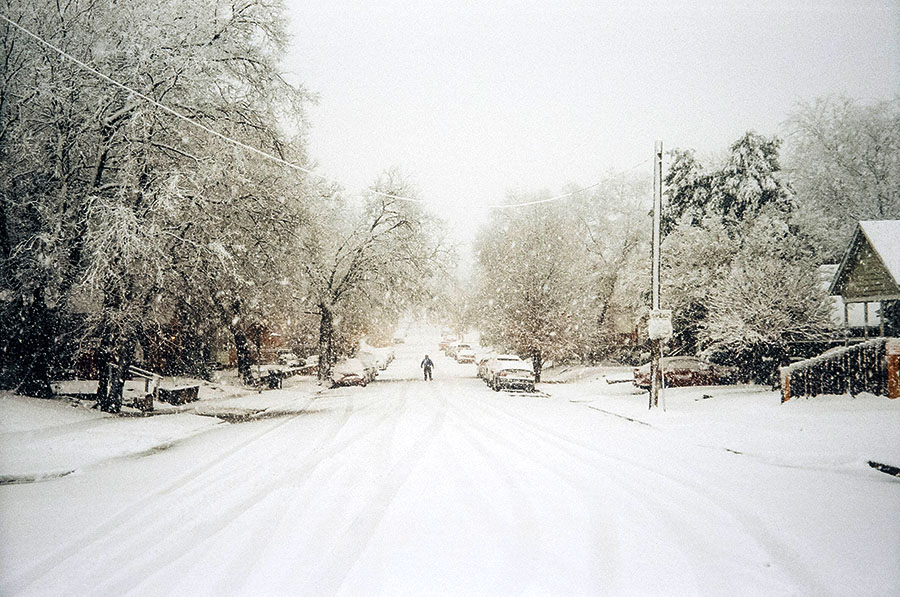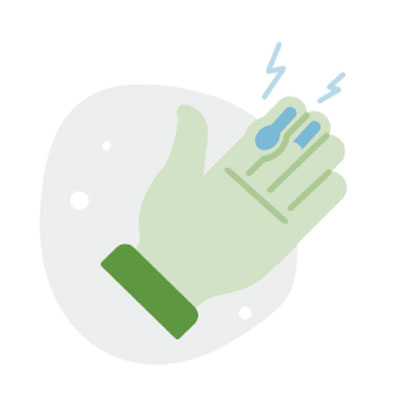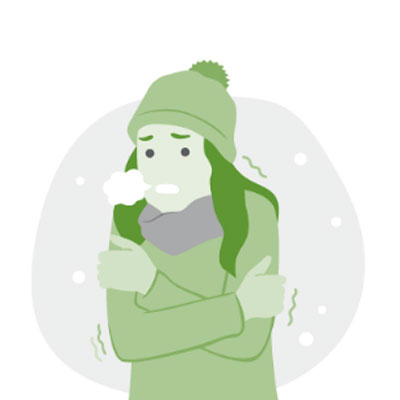Be Winter Weather Ready

Winter storms create a higher risk of car accidents, hypothermia, frostbite, carbon monoxide poisoning, and heart attacks from overexertion. Winter storms including blizzards can bring extreme cold, freezing rain, snow, ice and high winds.
Know Your Winter Weather Terms
Winter Weather Advisory
Issued for accumulations of snow, freezing rain, freezing drizzle, and sleet which will cause significant inconveniences and, if caution is not exercised, could lead to life-threatening situations.
Winter Storm Watch
A winter storm is possible in your area. The NWS issues a winter storm watch when severe winter conditions, such as heavy snow and/or ice, may affect your area but the location and timing are still uncertain. A winter storm watch is issued 12 to 36 hours in advance of a potential severe storm. Monitor alerts, check your emergency supplies, and gather any items you may need if you lose power.
Winter Storm Warning
A winter storm is occurring or will soon occur in your area. IF YOU ARE UNDER A WINTER STORM WARNING, FIND SHELTER RIGHT AWAY
Blizzard Warning
Sustained winds or frequent gusts to 35 miles per hour or greater and considerable amounts of falling or blowing snow (reducing visibility to less than a quarter mile) are expected to prevail for a period of three hours or longer.
Know Your Risk for Winter Storms
Pay attention to weather reports and warnings of freezing weather and winter storms. Listen for emergency information and alerts. Sign up for New Cumberland Borough’s Emergency Alerts. The Emergency Alert System (EAS) and National Oceanic and Atmospheric Administration (NOAA) Weather Radio also provide emergency alerts.
Stay Safe During Winter Weather
- Avoid carbon monoxide poisoning. Only use generators and grills outdoors and away from windows. Never heat your home with a gas stovetop or oven.
- Stay off roads if at all possible. If trapped in your car, then stay inside.
- Reduce the risk of a heart attack by avoiding overexertion when shoveling snow and walking in the snow.
- Limit your time outside. If you need to go outside, then wear layers of warm clothing. If the outdoor temperature is too cold for you, then it’s probably too severe for your pet. Temperatures lower than 32°F can cause hypothermia or frostbite.
- To promote safe sidewalks during winter months, the owner, occupant, or tenant of every property fronting upon or alongside of any of the streets in New Cumberland Borough is required to remove all snow or ice fallen or formed within 10 hours from the end of a weather event. Find out more >>
Learn the signs of, and basic treatments for, frostbite and hypothermia.

Frostbite causes loss of feeling and color around the face, fingers and toes.
- Signs: Numbness, white or grayish-yellow skin, firm or waxy skin.
- Actions: Go to a warm room. Soak in warm water. Use body heat to warm. Do not massage or use a heating pad.

Hypothermia is an unusually low body temperature. A temperature below 95 degrees is an emergency.
- Signs: Shivering, exhaustion, confusion, fumbling hands, memory loss, slurred speech or drowsiness.
- Actions: Go to a warm room. Warm the center of the body first—chest, neck, head and groin. Keep dry and wrapped up in warm blankets, including the head and neck.
Preparing for Winter Weather

- With winter approaching, be sure to look through your emergency kit and add supplies specific to winter, such as:
- Rock salt or more environmentally safe products to melt ice on walkways. (Remember that these products can be harmful to dogs, so be sure to choose a non-toxic brand if you or your neighbors have pets.)
- Sand/gravel to improve traction.
- Snow shovels or other snow removal equipment.
- Heating fuel. If you have a fireplace or wood-burning stove, keep a supply of good, dry wood for heating in case you lose power.
- Adequate clothing and blankets to keep warm, including coats, sweaters, hats, gloves, mittens, scarves, etc.
- Keep your NOAA Weather Radio in your kit to receive broadcast alerts and warnings directly from the NWS for all hazards. You may also sign up in advance to receive notifications from your local emergency services.
- Make a Family Communications Plan. Your family may not be together when disaster strikes, so it is important to know how you will contact one another, how you will get back together, and what you will do in case of an emergency.
- Winterize your emergency kit by keeping an emergency supply kit in your car with these extras:
- Jumper cables
- Flares or reflective triangle
- Ice scraper
- Car cell phone charger
- Cat litter or sand for better tire traction
- More: www.ready.gov/car.
- Before the storm hits, download free smartphone apps, such as those available from FEMA and the American Red Cross, which provide information about finding shelters, providing first aid, and seeking assistance for recovery.
- Be prepared to bring your pets/animals inside in the event of a winter storm. Move animals and livestock to a sheltered area with non-frozen drinking water.
More information regarding winter weather planning can be found at Ready.gov.



 (717) 774-0404
(717) 774-0404 1120 Market Street, New Cumberland, PA
1120 Market Street, New Cumberland, PA 8:30 a.m. - 4:30 p.m. Mon - Fri
8:30 a.m. - 4:30 p.m. Mon - Fri